Come and be inspired
Safari! Part 1: Mammals
Botswana
Mondo Verde Expeditions
March 18 – April 2, 2024
Photos by Bob Gress / Birds in Focus

African Elephants (above and below), Kanana Camp

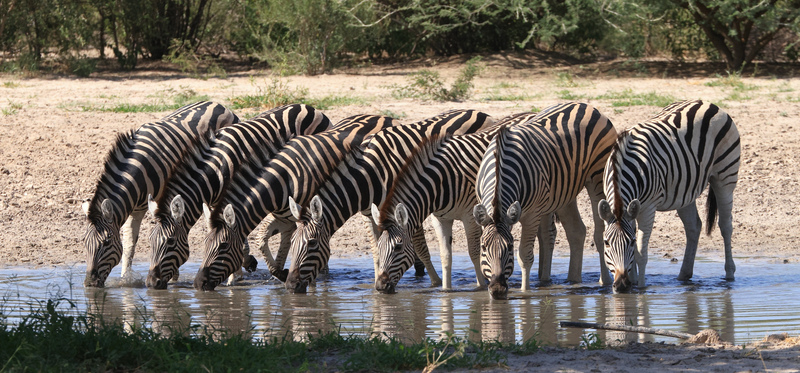
Plains Zebras (above and below), Dinaka Camp

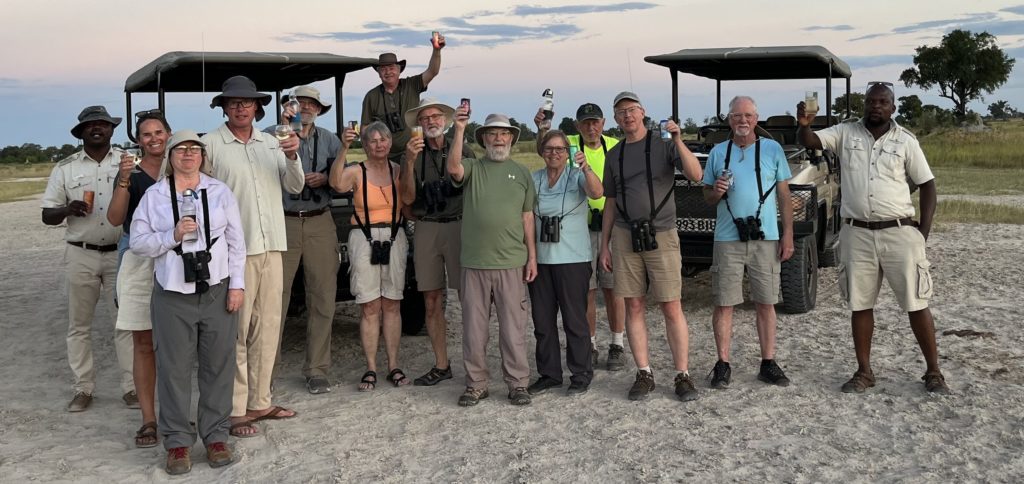
Mondo Verde Expeditions – at Kanana Camp
(left to right), safari guide Otsile, Melinda Jett, Laura Groeneweg, Tom Jett, Rod Wedel, Carolyn Schwab, trip leader Bob Gress, Terry Schwab, Jim Marlett, Patty Marlett, Bill Langley, Kevin Groeneweg, Tom Ewert, safari guide Sue

Lions, Dinaka Camp, Botswana
People are familiar with many African wildlife species. Zoos around the world commonly showcase the charismatic megafauna of eastern and southern Africa. When seeing elephants, giraffes, rhinos, hippos, lions, leopards and exotic looking antelopes, many of us feel we are seeing animals not of this world. And indeed, they are fighting to exist in a world dominated by humans.
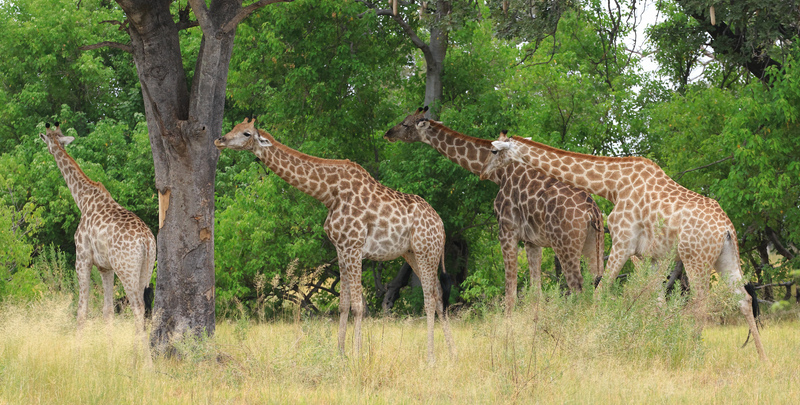
Southern Giraffes, Shinde Camp

Hippos (Does anyone say hippopotamuses anymore?) Kanana Camp
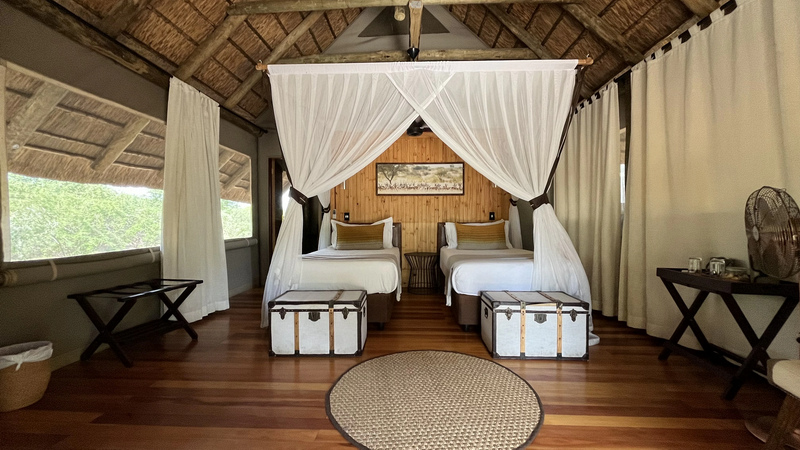
Dinaka Camp. They call it a tent because it has canvas sides. But it’s glamping not camping!
Ker and Downey – Botswana – “A Niche Carved from Eternity”
Ker and Downey operate safari camps in Botswana. We stayed eleven nights at three of their camps, Dinaka, Kanana and Shinde. Dinaka Camp is located in dry bush country in the Kalahari Desert. Several manmade waterholes attract wildlife.

Dinaka Camp. The dining area is in the shadows to the left in this photo. This lounge area was a popular spot to wait for dinner while watching and photographing wildlife attracted to the waterhole fifty yards away. The waterhole was also visible from all tents.

Greater Kudu and Kori Bustard at the waterhole in front of camp. Dinaka Camp

Common Warthogs come to drink and take a refreshing dip while keeping an eye on the camp and the people watching. Dinaka Camp

This Eland came for a quick drink before hustling away when it spotted camp guests. Elands are the world’s largest and slowest antelope. Dinaka Camp

While gathering for breakfast at 5:30 a.m. a handheld spotlight illuminated this Leopard at the waterhole. Dinaka Camp
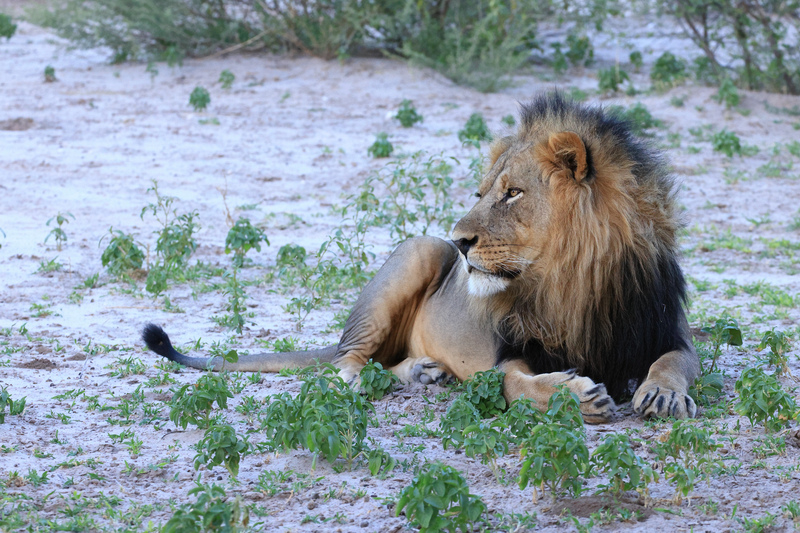
In the Kalahari Desert adult male Lions are known for their distinctive black manes. They sleep and rest 16-20 hours a day. Dinaka Camp
Botswana is one of the most sparsely populated countries in the world. More than 70% is within the Kalahari Desert. Functionally this is a semi-desert with huge areas of excellent grazing after recent rains. The Kalahari supports more animals and plants than typical deserts. It is the second largest desert in Africa, second only to the Sahara.

Blue Wildebeest, Kalahari Desert, Dinaka Camp

Black-backed Jackal, Kalahari Desert, Dinaka Camp

Springbok, Kalahari Desert, Dinaka Camp

Gemsbok, Kalahari Desert, Dinaka Camp

Red Hartebeest, Kalahari Desert, Dinaka Camp

Kanana Camp
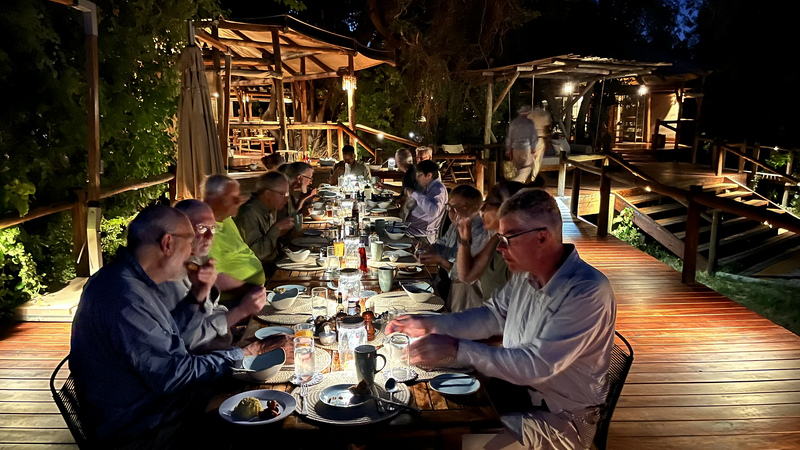
Kanana and Shinde camps are located in the Okavango Delta which also lies in the Kalahari Desert. This delta is formed where the Okavango River reaches a tectonic trough where the water spreads out into the desert with no outlet. It is seasonally flooded from March to July. All the water reaching this delta is ultimately evaporated.

Tsessebe, Kanana Camp

Vervet Monkey, Kanana Camp

Chacma Baboons, Kanana Camp

Bush lunch at Kanana Camp. While eating lunch in the shade of this tree, we overlooked the plains with grazing Blue Wildebeests, Plains (Burchell’s) Zebras, Impalas, and Red Leche.


African Elephants, Kanana Camp.

Shinde Camp resembles a complex of tree houses. “Shinde” means tree squirrel. Connected by boardwalks running through the trees were the dining area, two lounge areas, and a treehouse toilet with an open wall that allowed a unique opportunity for birdwatching.

Shinde Camp. Below the treehouse walkways was a gathering area complete with a campfire that set the mood each evening before dinner. The treehouse lodge overlooked a part of the Okavango Delta wetland.
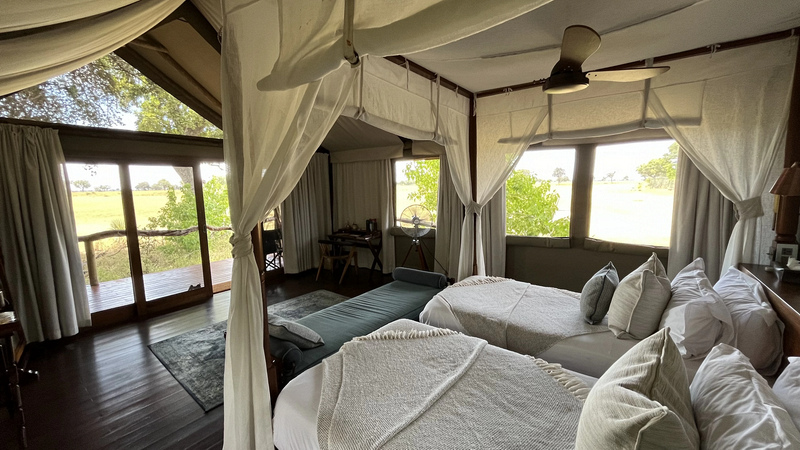
Shinde Camp. Unlike the treehouse style lodge, our tents were only a few feet off the ground. From my porch at night, I used my headlamp to see Honey Badgers, Blue Wildebeest and a grazing Hippo.

Leopard, Shinde Camp
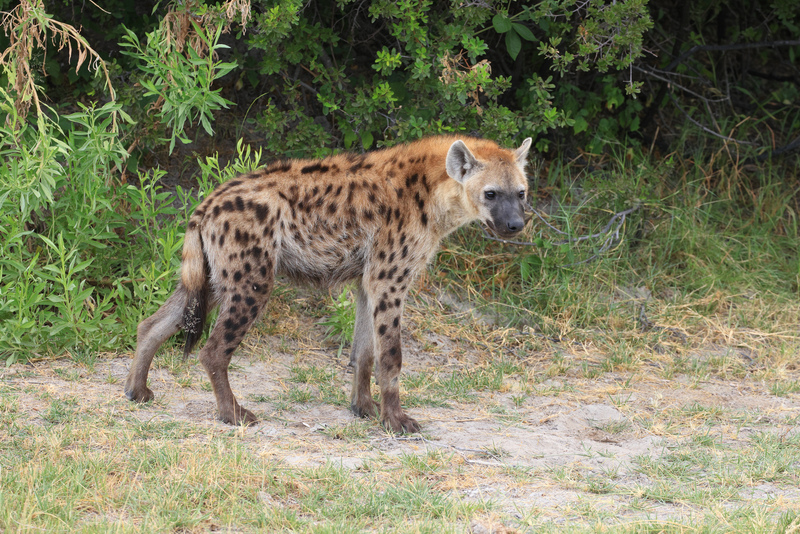
Spotted Hyaena, Shinde Camp

Waterbuck, Shinde Camp
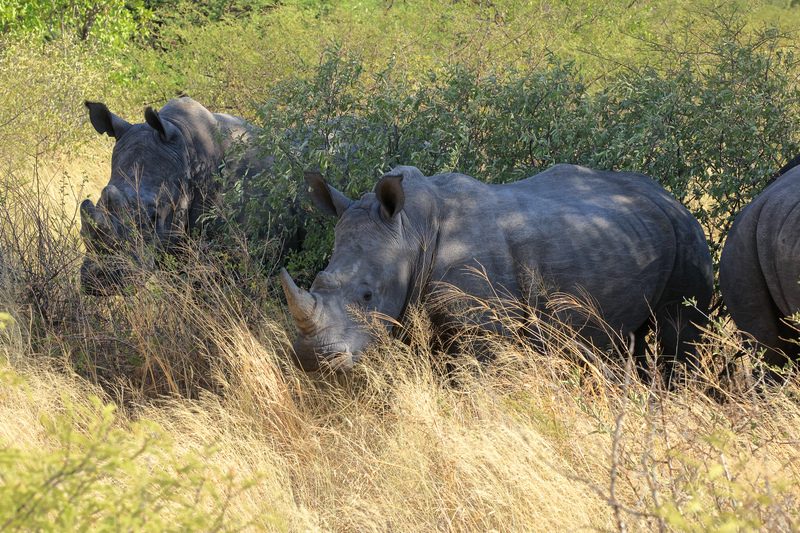
Square-lipped Rhinoceros (White Rhino) NEAR THREATENED SPECIES, Botswana
Square-lipped Rhinos were common throughout southern and eastern Africa but hunting and poaching brought them to the brink of extinction by the 1960s. There are now less than 300 in Botswana. In Africa they are classified as a NEAR THREATENED SPECIES. Each rhino carries an implanted chip which allows monitors to follow their exact locations. We saw a group of five rhinos and they were in the presence of armed guards. Their largest threat is poachers. Large bulls at 5,500 pounds, are the second largest land mammal on earth.
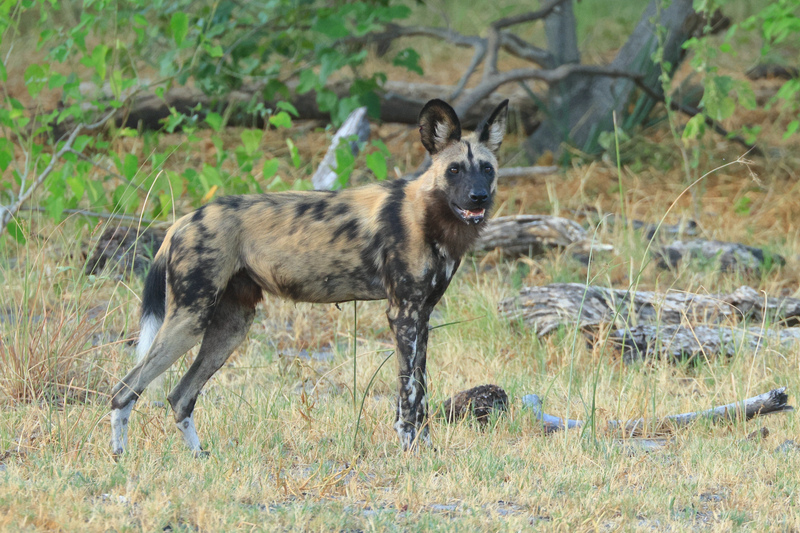
African Wild Dog (African Painted Wolf) ENDANGERED SPECIES, Kanana Camp
As a result of conflicts with livestock owners, the African Wild Dog is the second most endangered carnivore in Africa (after the Ethiopian Wolf). We observed a pack of ten. There may be 600-700 left in Botswana and perhaps 5,000 left in the world. They are classified as an ENDANGERED SPECIES.
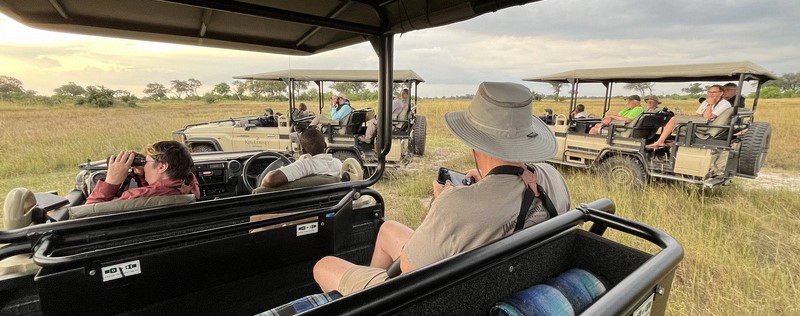

Impala, Okavango Delta, Kanana Camp
